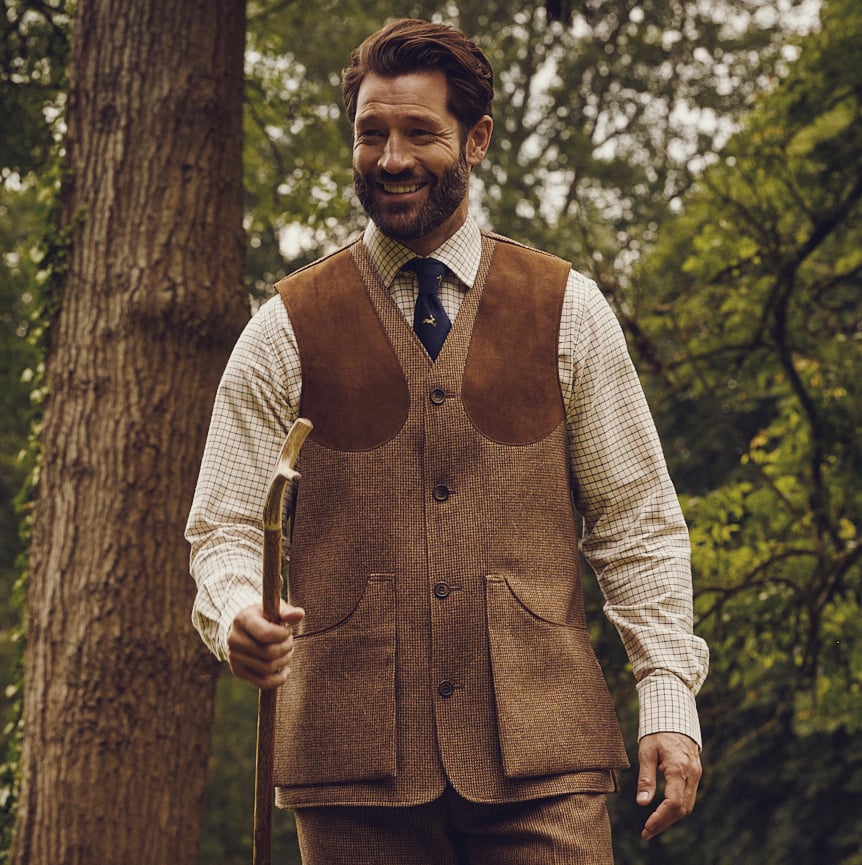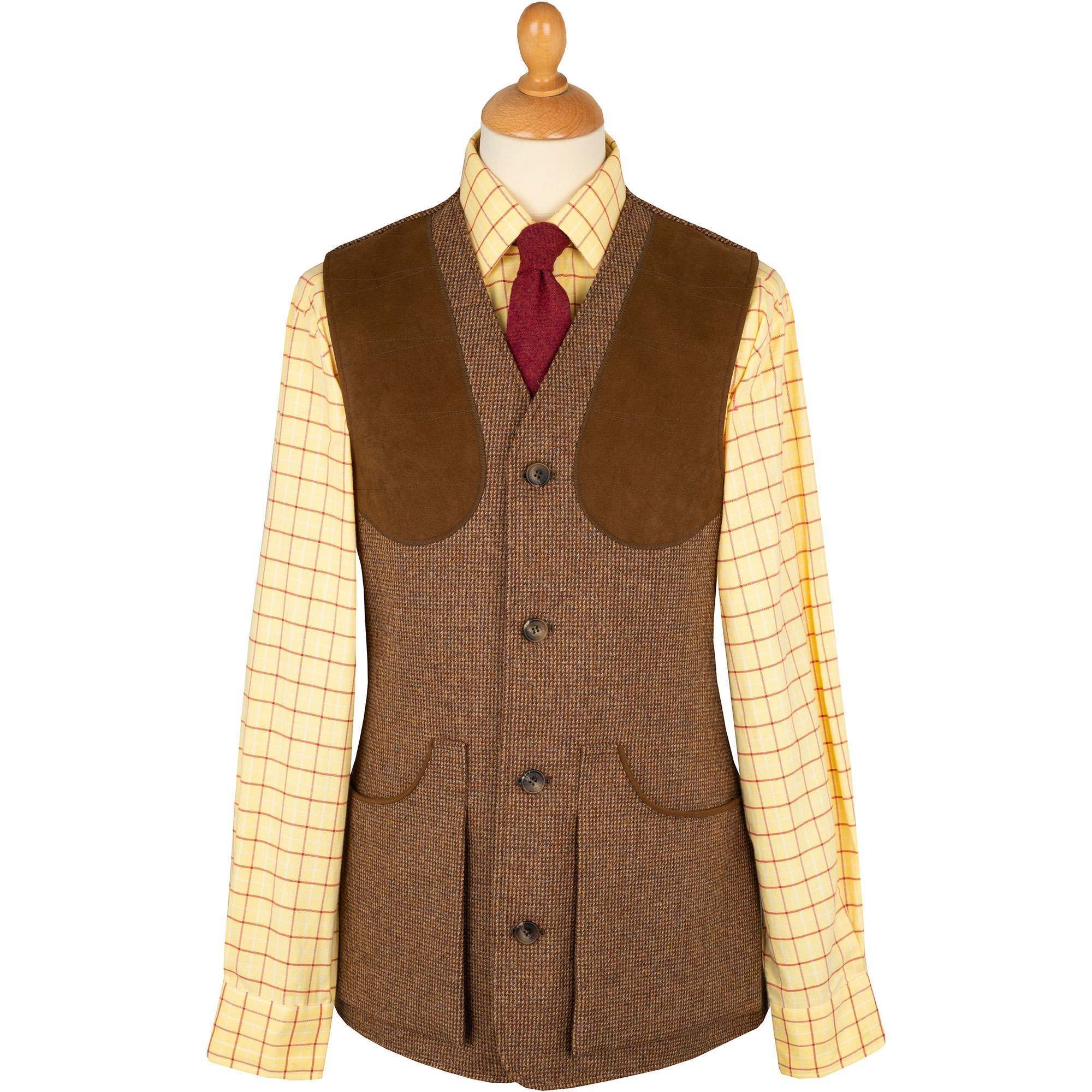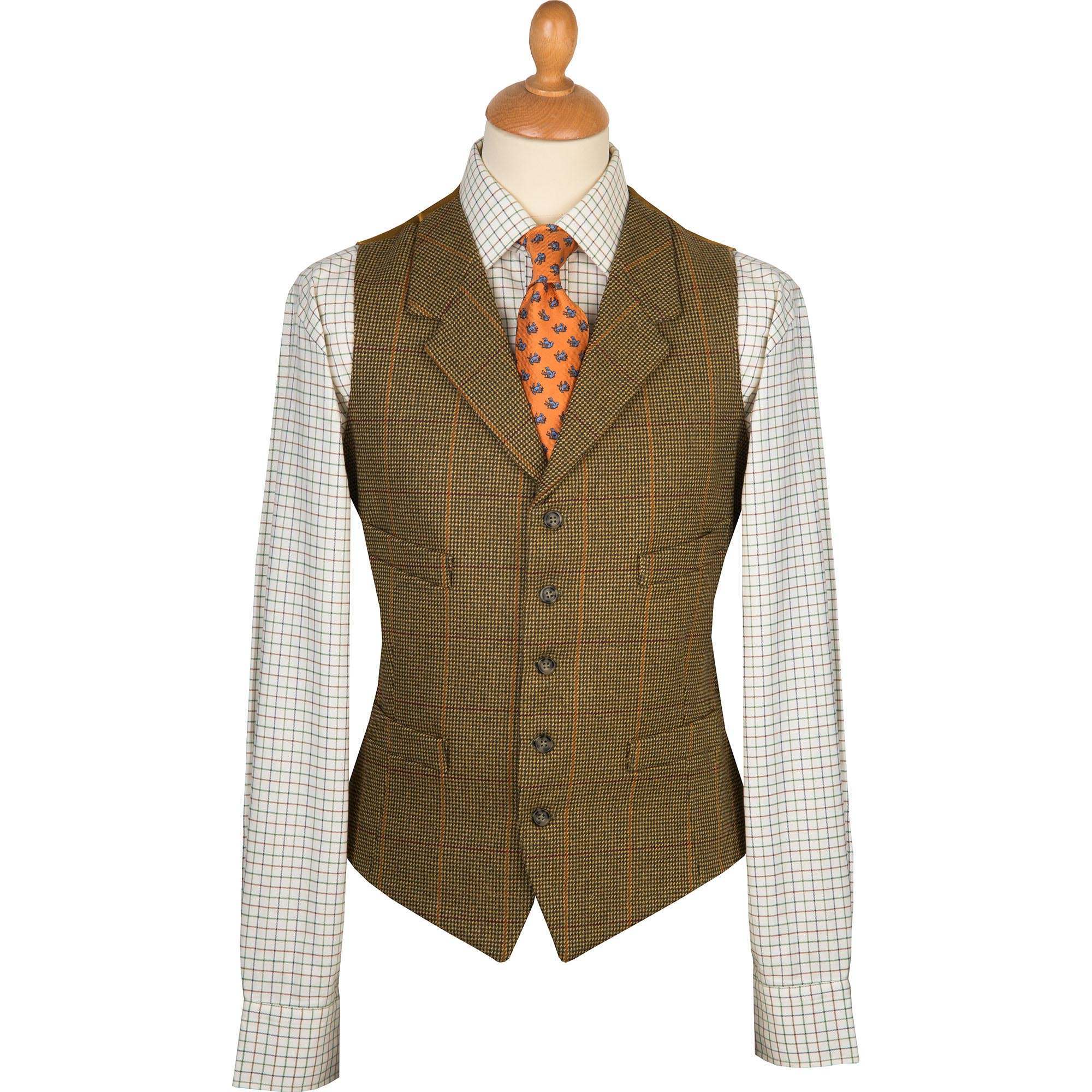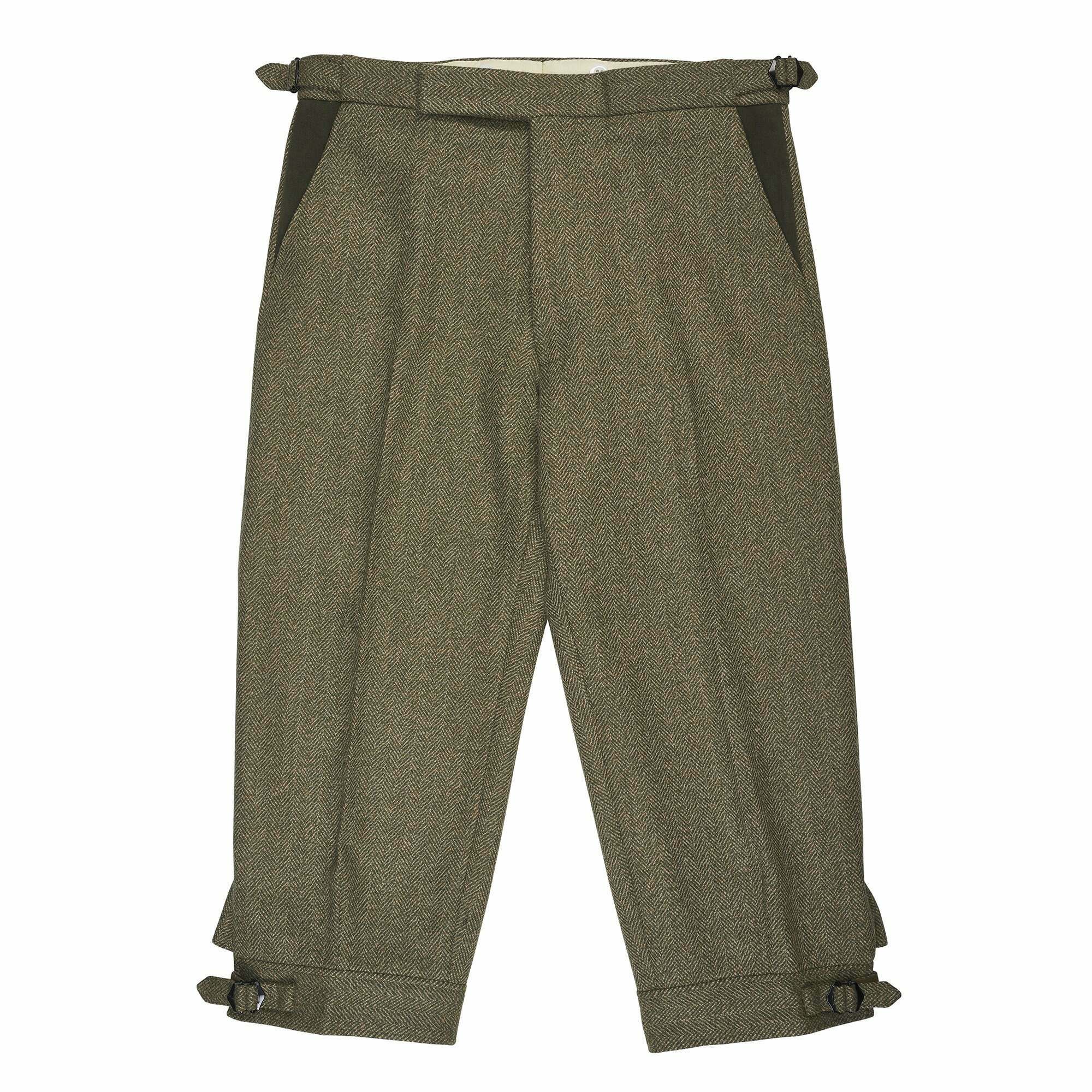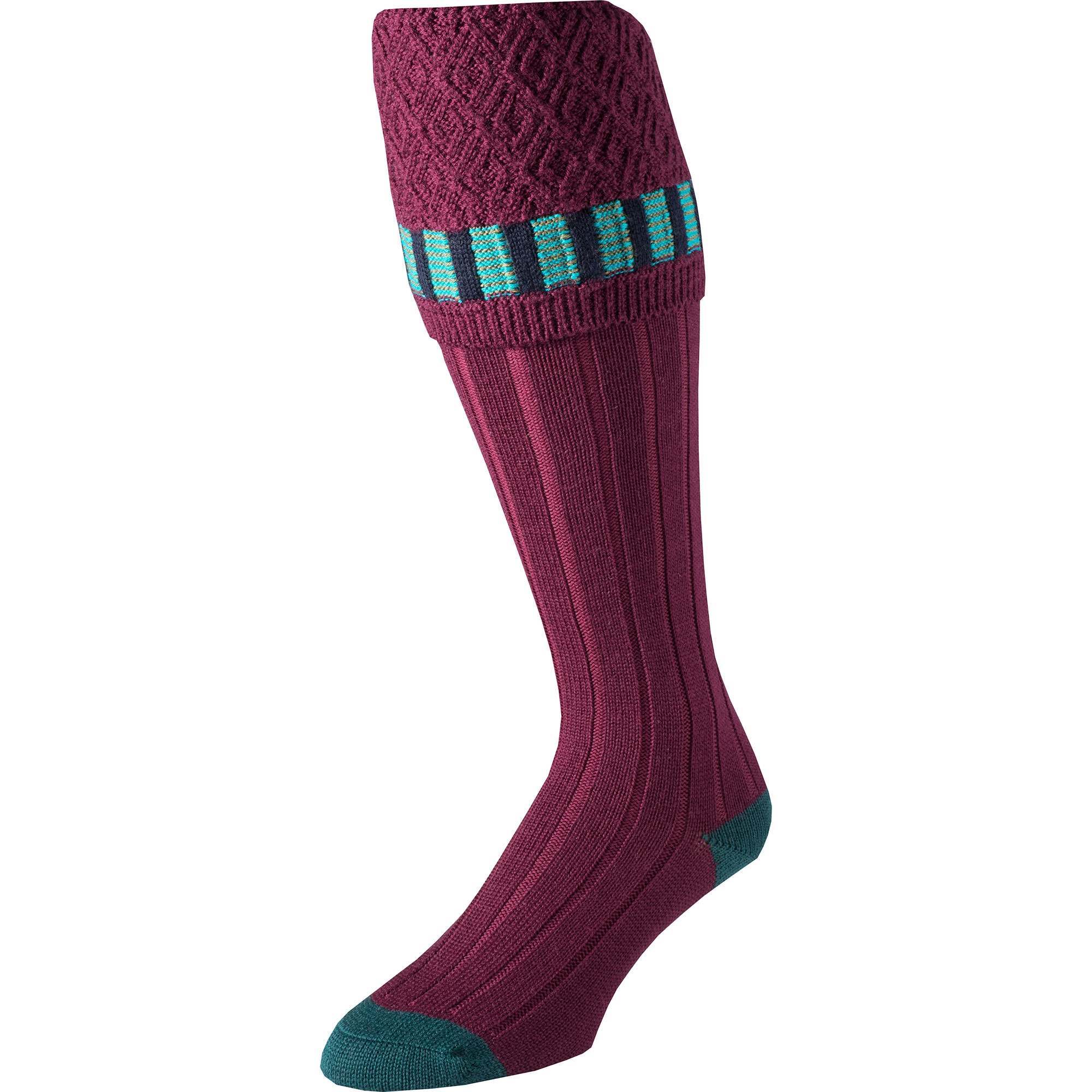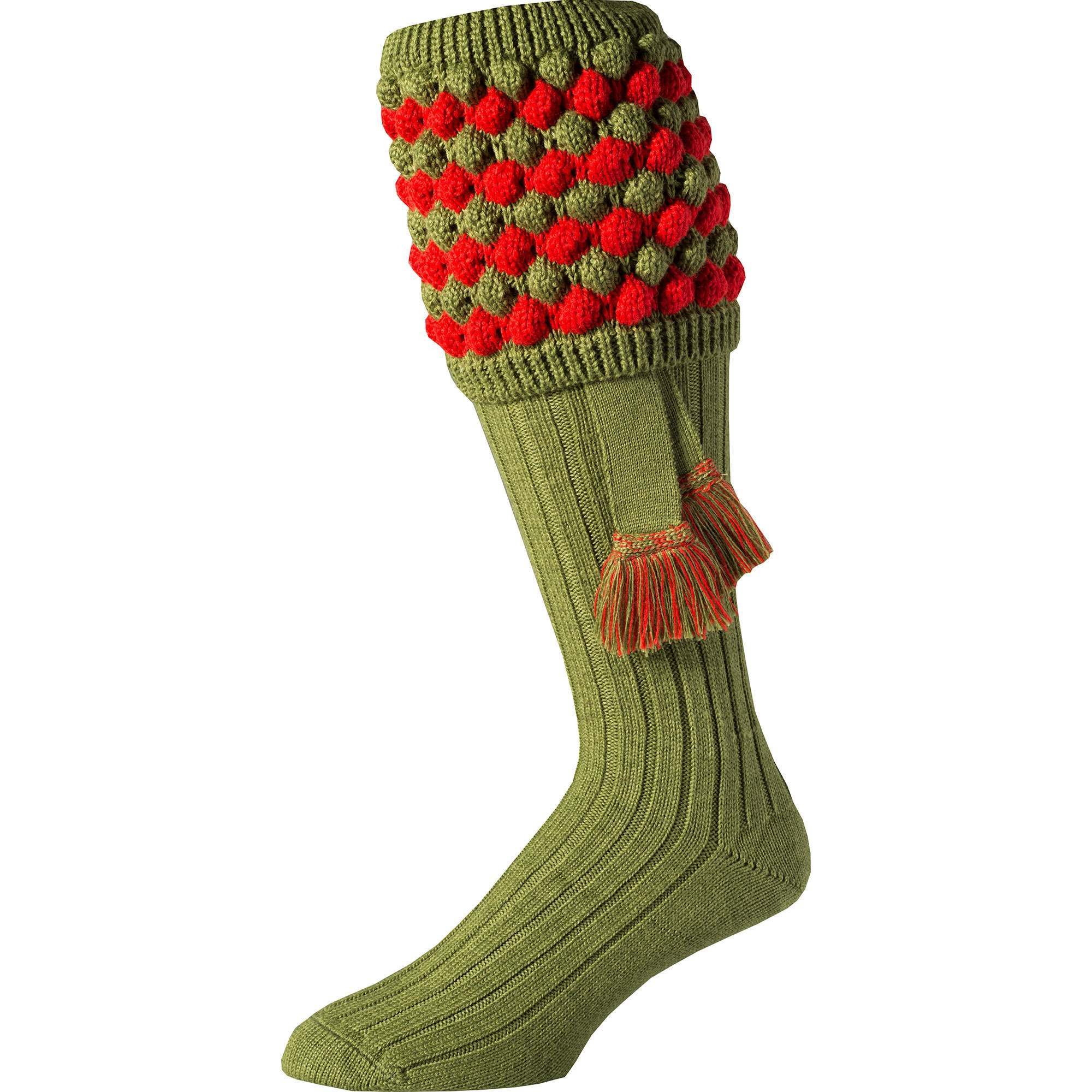In the world of British country pursuits, few traditions are as steeped in history and sartorial precision as the clothing worn on a shoot. At first glance, the outfit may seem eccentric-or even a little strange-but behind every tassel, check, and button lies generations of practical refinement. Rooted in the customs of the British countryside, the shooting ensemble is designed not just for appearance, but for performance in the field.
Let’s explore what to wear shooting, delving into the key elements of this time-honoured wardrobe, from head to toe.
The Upper Half: Shirt, Tie, and Waistcoat
Tattersall Shirt
The quintessential shooting shirt is the tattersall; distinguished by its grid-like check pattern. Originally worn by stable hands and jockeys, the pattern is now synonymous with country style. The shirts are generously cut for ease of movement, essential for mounting a gun or reaching for cartridges.
A tie may seem like an odd addition to a sporting outfit, but wearing a tie in the field is a longstanding element of British sporting dress. Shooting has historically been associated with the gentry and aristocracy, and with that came a certain formality of dress; reflecting respect for both the land and the company you’re in. Although not everyone wears a tie on a 21st Century shoot, a collared shirt and tie are considered the proper way to dress for a shoot, especially on formal driven days. Tradition dictates wool over silk: the former resists the elements far better.
Wool Waistcoat or Shooting Vest
When temperatures are warmer at the start of the shooting season in early autumn, many opt for a shooting waistcoat in place of a full coat. These vests typically feature reinforced shoulder panels to absorb the recoil from the gun, and generous bellow pockets to store cartridges. Unlike dress waistcoats, they are cut looser and built for practicality.
Shooting Waistcoat
Wool Waistcoat
When layering in colder weather, a sleeveless wool waistcoat provides extra insulation under a jacket without adding bulk to the arms, a key consideration when handling a gun. Merino wool is especially prized for its ability to regulate body temperature.
Staying Warm in the Field: The Shooting Jacket
A traditional shooting jacket, often made from tweed, is the outermost layer, engineered to withstand the rigours of the countryside. Tweed isn’t just for aesthetics: it’s wind-resistant, hardwearing, and often treated to be water-repellent. A key feature is the action back, a gusseted design at the shoulders that enables the wearer to lift and aim their gun freely.
Other hallmark details include storm cuffs or storm tabs, features designed to keep the elements at bay. Storm cuffs are hidden elasticated cuffs inside the sleeves that hug the wrist, preventing wind and rain from travelling up the arm. Storm tabs, often found at the collar or cuffs, can be fastened securely to seal out drafts and water. Some modern iterations of the shooting jacket incorporate waterproof membranes and quilted linings, offering enhanced protection and comfort while still honouring traditional styling.
The Foundations: Breeks, Stockings & Garters
Breeks or Plus Twos/Fours
Breeks are traditional shooting trousers, designed to end just below the knee. You’ll find variations such as plus twos or plus fours, named after how many inches the material extends below the knee. Made from hard-wearing materials like tweed, breeks protect the legs from brambles and rough terrain while allowing freedom of movement. Their loose fit is deliberate; mobility is crucial when walking across a moor or raising a shotgun to the shoulder.
Shooting Stockings & Garters
Essential to any shooting outfit, shooting stockings are thick, knee-high wool socks that combine warmth with practicality. Made of natural fibres like merino or wool blends, they keep feet warm and wick away moisture, ideal for standing on a frosty peg or trekking through wet ground. Reinforced toes and heels add durability.
Worn with breeks, stockings allow for easy pairing with wellingtons or boots, unlike full-length trousers, which would bunch awkwardly or become caked in mud. To keep them from sliding down, garters are worn just below the knee, often finished with colourful flashes or tassels that add a dash of character and visibility in the field.
Other Essentials & Considerations
When considering what to wear shooting, it’s important to think beyond the core garments. The perfect outfit is elevated by the finer details – it’s the accessories and finishing touches that complete a truly distinguished look.
- Headwear: A tweed flat cap or deerstalker isn’t just for style, it provides protection from sun and drizzle while blending into the natural environment. It also does not blow off in the wind.
- Gloves: In colder months, shooting gloves are essential for warmth and grip without sacrificing dexterity. Traditional shooting gloves are designed with a turn-back or fold-back trigger finger, usually on the right glove for right-handed shooters, allowing the wearer to uncover the index finger when it’s time to take a shot, then fold it back over to stay warm between drives. This clever detail ensures precision and comfort in the field.
- Flasks: A staple of any traditional shoot, a hip flask is often tucked into a pocket or cartridge bag and shared among friends during a lull between drives. Typically filled with a warming spirit such as whisky, sloe gin, or damson vodka, the contents are as much about camaraderie as they are about warmth. Offering a nip from your flask is a longstanding gesture of good cheer in the field, reflecting the sociable, convivial nature of British shooting tradition.
- Shooting Accessories: Cartridge bags, game carriers, and gun slips are typically made from bridle leather and canvas, built for function and durability.
Why So Traditional?
British shooting clothing is one of the few sporting wardrobes that has remained largely unchanged for over a century. That’s because it’s rooted in utility and etiquette. In a sport that values tradition, the attire honours both the land and the heritage of those who shoot on it. When considering what to wear shooting, many estates still adhere to formal dress codes, and guests are expected to arrive properly attired.
Whether you’re walking up grouse on the moor or standing on a peg in the late season chill, the right clothing makes a world of difference. Traditional British shooting attire isn’t just about looking the part, it’s about respect: for the sport, for the countryside, and for centuries of rural craftsmanship.
In every reinforced toe, pleated action back, and weather-ready tweed, that legacy lives on.




